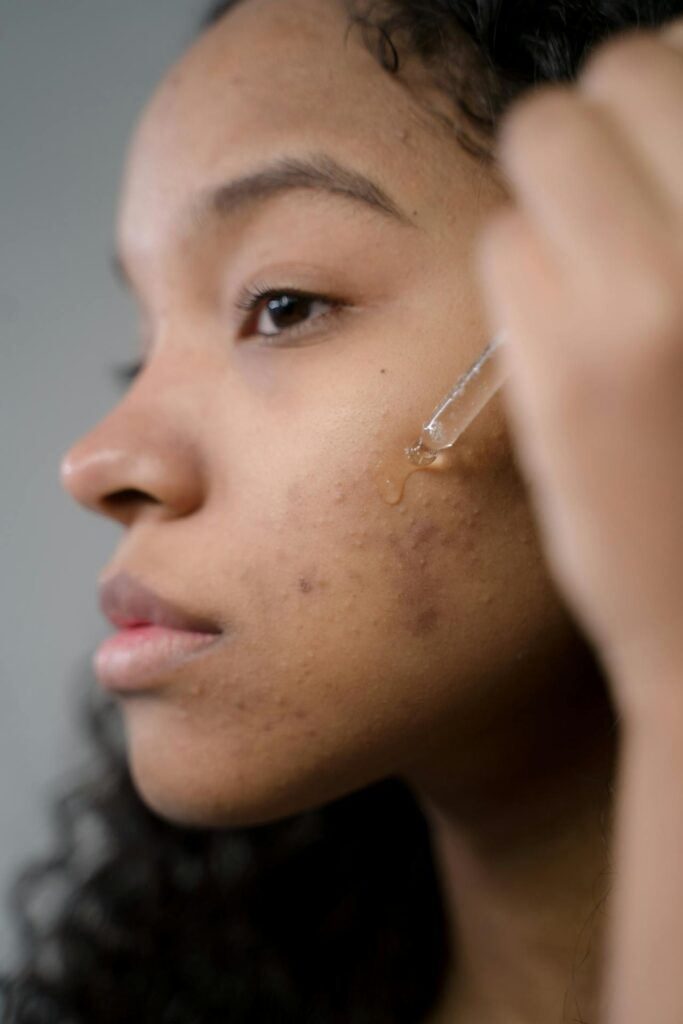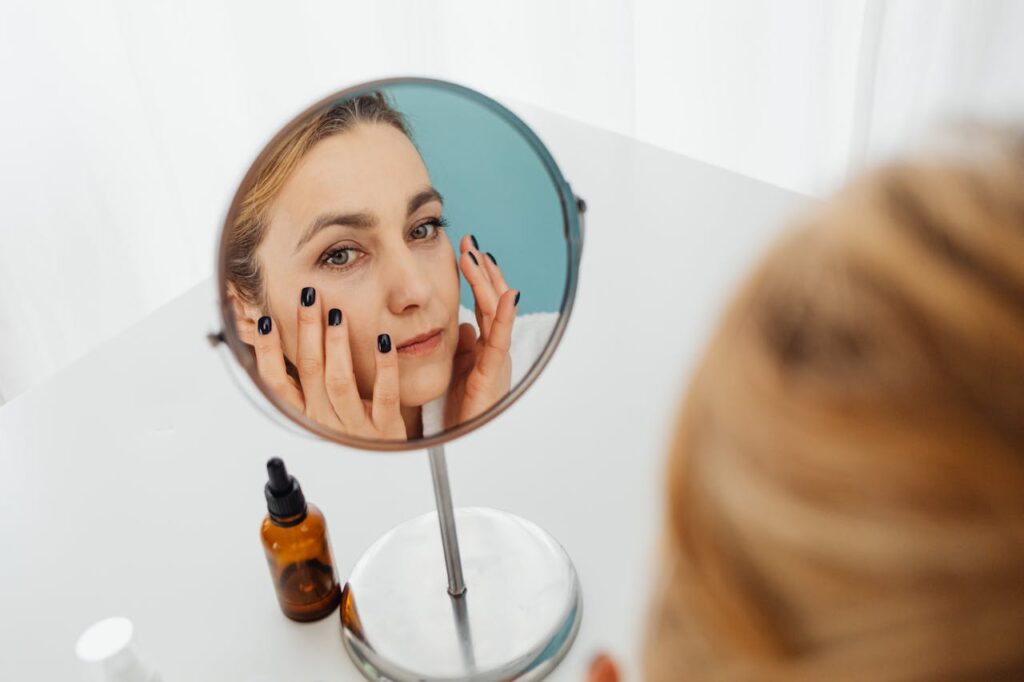Chemical exfoliation is an essential component of any skincare routine, and choosing the right products can make all the difference in your overall success. Understanding how various ingredients interact with your skin and the issues they can address will help you target your aesthetic concerns and work with your skin rather than against it. In this guide, we’ll compare AHA vs BHA to help you make an informed decision.
What is alpha hydroxy acid (AHA)?
Before we dive into the AHA vs BHA showdown, let’s cover the basics of each product. Alpha-hydroxy acids (AHAs) are water-soluble products that penetrate only superficial layers to help your body shed dead skin cells. Here’s what you need to know:
What is AHA made of?
AHA is often derived from sugar, milk, and fruit. Let’s look at some common AHAs and their sources:
- Glycolic acid: Sugar cane
- Lactic acid: Milk, fermented vegetables
- Citric acid: Various citrus fruits
- Malic acid: Apples
- Mandelic acid: Bitter almonds
- Tartaric acid: Grapes
What can alpha hydroxy acids treat?
AHA is highly versatile and may improve many cosmetic concerns, including:
- Dull, rough skin texture: Revitalizes complexion by removing dead skin cells.
- Uneven skin tone and hyperpigmentation: Helps fade dark spots from sun damage and old acne spots.
- Fine lines and wrinkles: Stimulates collagen production to combat skin laxity.
- Mild acne: Increases cell turnover rates and gently unclogs pores.
- Keratosis pilaris: Smooths rough, bumpy patches on the arms and legs.
Who shouldn’t use products containing AHA?
Many people (especially those with dry skin) find that AHAs offer powerful anti-aging effects by promoting faster cellular regeneration. However, they’re not for everyone. If your skin type is sensitive and reactive, these skin care products may be too harsh for regular use.
Those using potent retinoids and other acne medications may have adverse reactions. AHA use can also increase photosensitivity, so only add it to your routine if you can stay out of the sun or wear adequate protection when you’re outdoors.
Related: What Are Biostimulators and What Do They Do?
What is beta hydroxy acid (BHA)?
Salicylic acid is the most common beta-hydroxy acid (BHA) in the world of skincare. This oil-soluble acid penetrates deeper into pores to exfoliate from within.
What is BHA made of?
BHA is typically sourced from willow bark, wintergreen leaves, and sweet birch. It’s closely related to aspirin and has powerful anti-inflammatory and anti-bacterial properties.
What can BHA address?

A BHA exfoliant is an excellent choice for people with oily, acne-prone skin. It can improve many aesthetic conditions, such as:
- Acne and blackheads: Penetrates oil and clears out clogged pores.
- Enlarged pores: Removes build-up to minimize pore size.
- Excess sebum production: Regulates oil production to balance the skin.
- Post-inflammatory hyperpigmentation: Soothes redness and irritation after breakouts.
- Keratosis pilaris: Softens bumpy skin.
Who shouldn’t use products containing BHA?
Although BHA can be very effective at eliminating excess oil, some people may need to avoid it or use it with caution:
- People with aspirin allergies
- Those with dry, sensitive skin
- Pregnant women
- Anyone using strong topical treatments like retinoids and benzoyl peroxide
Related: Your Guide to Peptide Injections for Health and Wellness
What are the differences between AHA vs BHA?
In order to form a solid understanding of each chemical exfoliant, let’s compare the practical differences between AHA vs BHA products.
Product solubility and penetration depth
AHA: Water-soluble
Because AHA dissolves in water, it won’t penetrate your pores or act on deeper epidermal layers. Instead, it improves surface-level concerns like dullness, signs of aging, and uneven tone and texture.
BHA: Oil-soluble
BHA is oil-soluble, allowing it to pass through the lipid barrier and penetrate more deeply into the skin. It can effectively break up sebum deposits to cleanse and exfoliate within the pore lining.
Targeted skin concerns
AHA: Anti-aging
We’ve already highlighted the cosmetic concerns an AHA can help improve, but how is this product used in professional facial treatments to combat signs of aging, a dull complexion, and uneven skin texture? Your esthetician may offer a customized chemical peel, a glycolic acid face mask, or a salon-quality AHA solution to use at home as you revitalize your outer layer.
BHA: Acne
BHA is ideal for acne-prone skin, as it cuts through excess oil to cleanse sebum, dead skin cells, and acne-causing bacteria from your pores. An in-office salicylic acid peel can help you address blackheads, whiteheads, and general congestion.
Skin sensitivity
AHA: More suitable for dry skin
People with sensitive skin may find AHA too harsh. It can also make your skin more susceptible to sun damage, so sunscreen is a must.
BHA: More suitable for oily skin
When it comes to AHA vs BHA, salicylic acid is generally the gentler option. Thanks to its anti-inflammatory properties, it may cause less irritation in people with sensitive skin. However, it can still lead to dryness and peeling, especially when used too frequently.
Related: What Are the Best Facial Treatments for Acne?
Explore BHA and AHA focused skincare treatments at The Wellness Club!
Ready to strategically incorporate acids into your skincare regimen? The Wellness Club is here to help! Reach out today to begin your journey.

